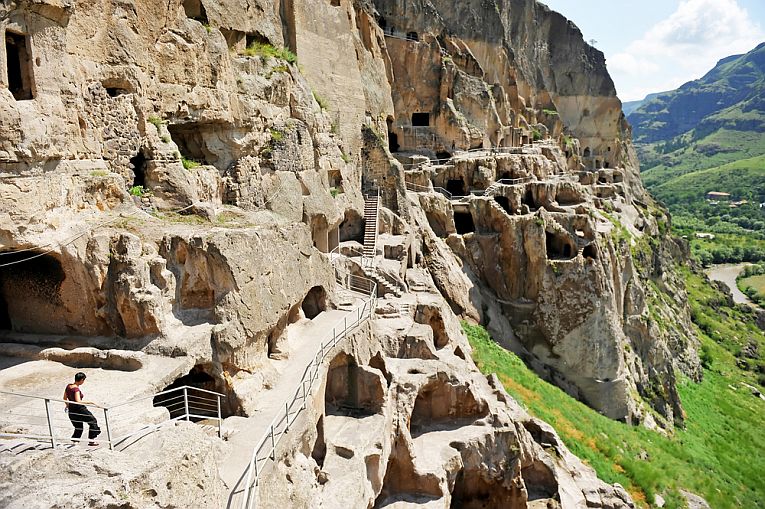The ancients weren’t gods. They lived long and healthy lives in some cases and performed nobly at their vital tasks. This may have made them seem like superhumans or giants, to those poorly-equipped to follow in their footsteps. Whatever happened, it is taking a long time for research to discover truth rather than myth or political machination.Only 13,000 years ago, the Late Upper Palaeolithic
has given us a 4th strand of the important ancestors who colonised Ice Age Europe from Africa and the Middle East long before this (45,000 years ago). In those days, true agriculture developed by early farmers(EF!) in the Levant was a brand-new technology and everybody was really a hunter-gatherer, just like some of us nowadays. The Caucasus has always been a crucial crossing point between Europe and Asia, just north of the Black Sea. During one Ice Age, 25,000 years ago some very early Bronze Age herders were trapped for at least a millenium within the Caucasus Mountains, where they could survive the blasting cold in shelter.The exact period was called the Last Glacial Maximum. Possibly the icy northern winds were swept upward, leaving a warm enclave just south of the protective barrier.
From the east, the Yamanaya Pontic culture must have been influenced by this protected grouping of unrelated people as it spread into Europe and also deep into Asia. However it happened, their Georgian and other genes tell us a story of survival against the odds. Andrea Manica and more than 20 other scientists from institutes as far apart as Dublin and Ferrara, Saudi Arabia and Israel, project this nugget of valuable research as Nature Communication’s paper,Upper Palaeolithic genomes reveal deep roots of modern Eurasians.
Why should we read such an irreligious supposition? The answer is incredibly simple. We have been given this information to add to established knowledge of the 3 ancestral populations in the Eurasian areas of human migration. They are known as the Western hunter-gatherers (WHG) who were partially replaced by very early agriculturalists and then a group known as the Yamanaya. These are the Bronze Age steppe dwellers who had Ancient Northern Eurasian (ANE) genes as well as these Caucasus hunter-gatherer (CHG) people as ancestors. The highly significant Yamanaya group now have a fairly complete list of those peoples whose genomes contributed to their great importance.
In addition to Europe, these movements of humans laid the foundations of cultures throughout central Asia, including southern and even south-east Asia. Western Georgia supplied some of the fossils for these studies in the form of the Satsurbia cave and a rock shelter known as Kotias Kide. A Swiss cave called the Grotte du Bichon also had a similar skeleton. The techniques used in Dublin (Trinity College) and York Universities were particularly decisive in revealing a total lack of gene contamination, while dating was employed using only ancient and African San Pygmy ancestral trees.
This can mean that a lot of future research can concentrate more on these early Out of Africa
cultures and how Eastern and African descendants developed to create that wonderfully complex mix of races we presently possess. This can mean that a lot of future research can concentrate more on these early Out of Africa
cultures and how Eastern and African descendants developed to create that wonderfully complex mix of races we presently possess. Here is a Laotian skull to supply us all with yet another headache on how people migrated so far, so successfully and so early. Earth Times yet again has to congratulate those who carefully study the smallest of clues on the most unlikely and rare material to present us with a true world history (instead of that awful opinionated stuff we read in some of our national histories!)










